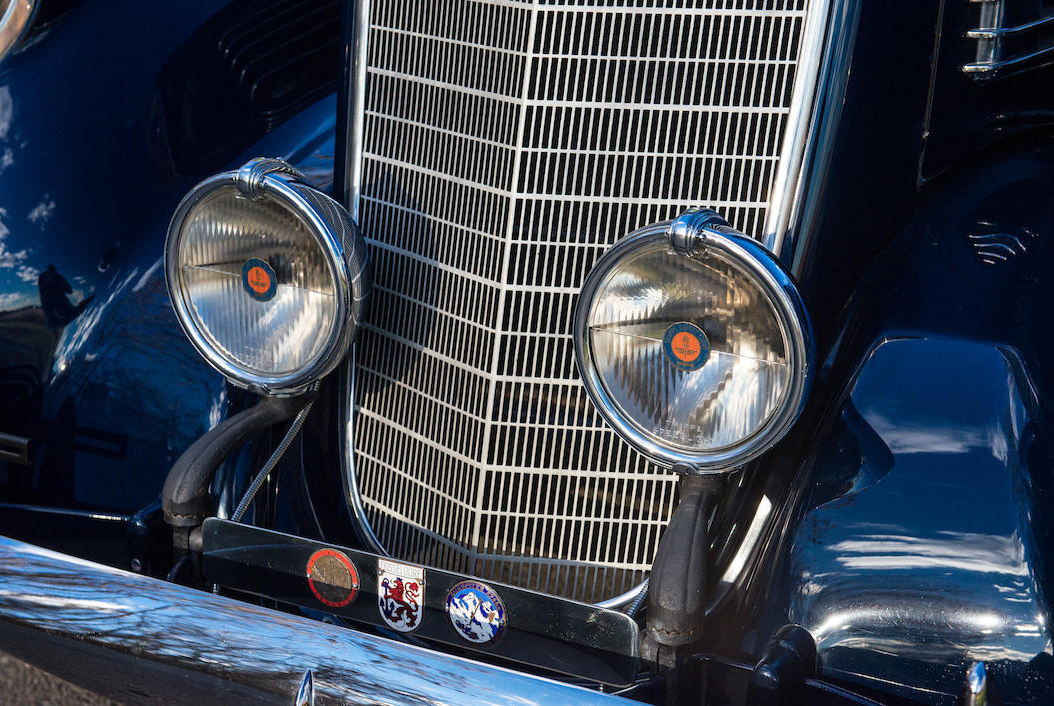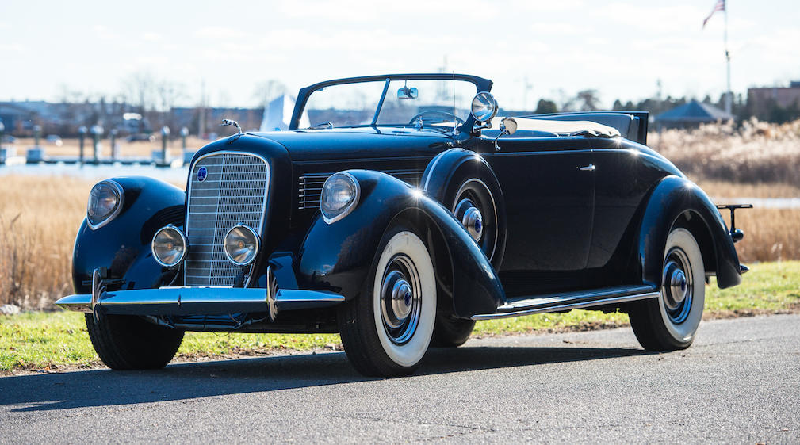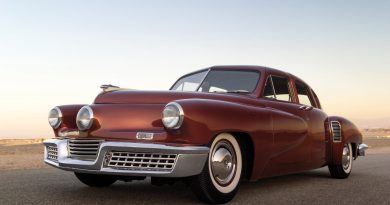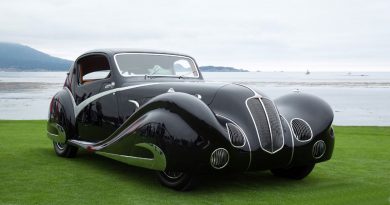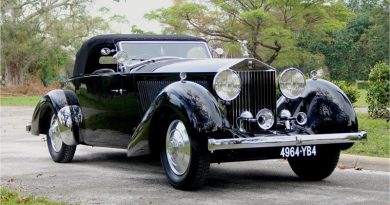1938 Lincoln Model K Roadster
The Lincoln K series (also called the Lincoln Model K, in line with Ford nomenclature) is a luxury vehicle that was produced by the Lincoln Motor Company. The second motor line produced by the company, the Model K was developed from the Model L, including a modernized chassis on a longer wheelbase. In 1931, Lincoln introduced a V-12 engine, becoming a feature of the company for nearly 20 years.

Among the body styles available for the Model K Lincoln in 1938, the proportions of the LeBaron Coupe are most outstanding, with its relatively small roofline exaggerating the length of the hood and giving the car an appearance of immense power. It is an automobile to strictly carry two people, as there is a full trunk and no rumble seat. Few were the men and women who could have afforded such a delightfully impractical automobile in 1938; specifically, the exact number of people was 12.
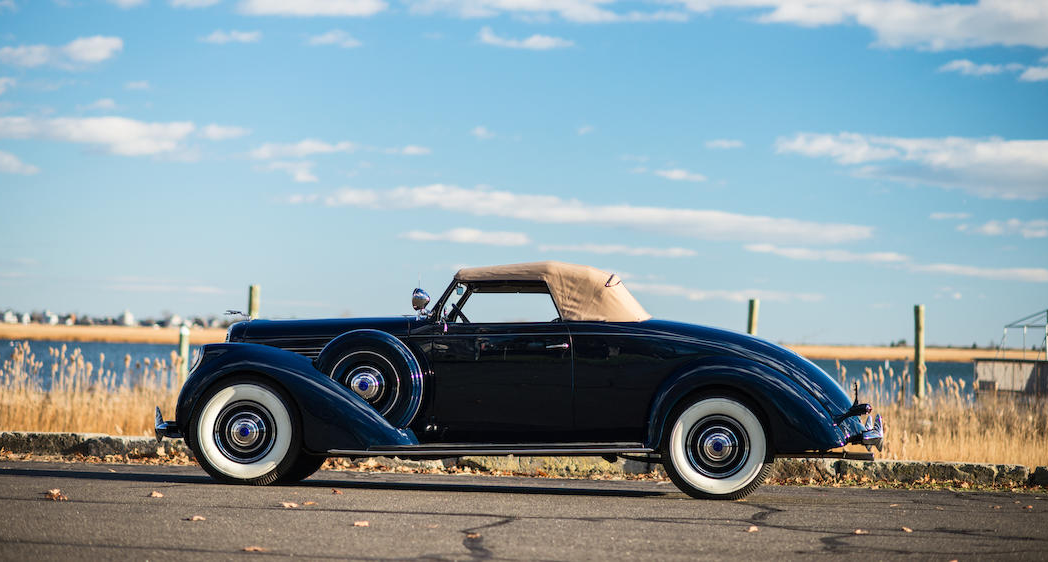
Lincoln built just 133 12-cylinder Model K examples in 1939, the last year for the exclusive, luxurious model produced since 1933. No fewer than 21 different body designs were available from Brunn, Willoughby, Judkins and LeBaron, with all but three built in single-digit quantities. That number included the two-passenger coupe by LeBaron, of which just four are thought to have been built.
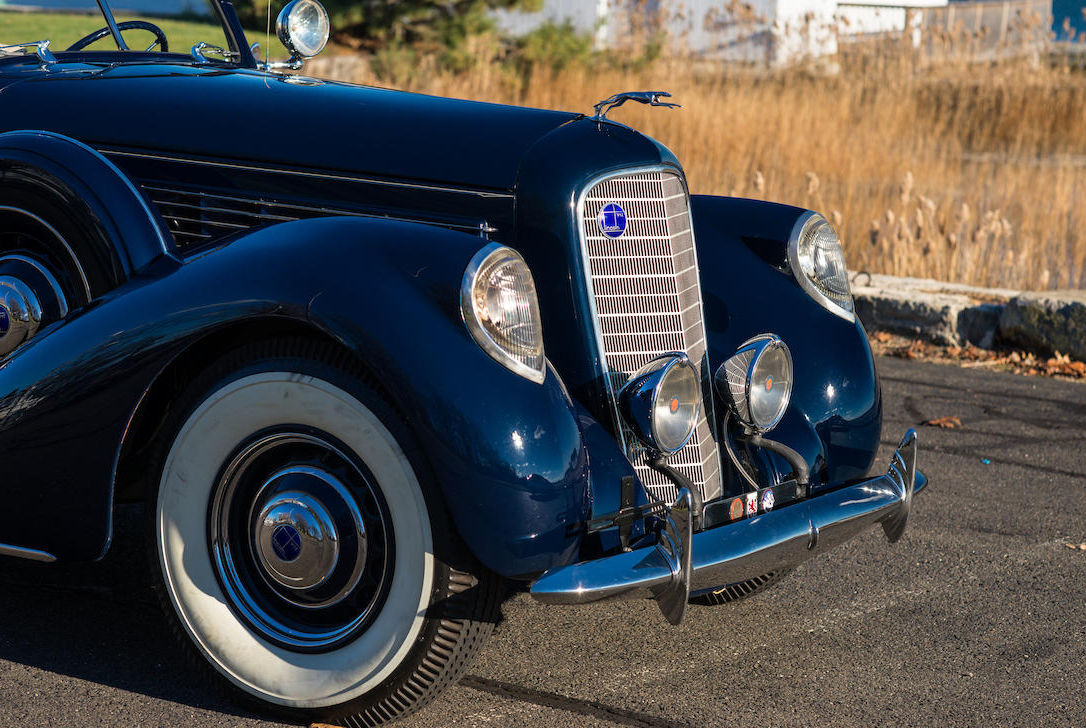
Inside the cozy cabin is the three-speed manual transmission lever sprouting from the floor. Atop the dashboard are a pair of vents directing heated air to clear the windshield. On the outside of the windshield are the vacuum-powered wipers.
Inside the cab is the three-spoke steering wheel through which is seen the 100-mph speedometer, a top speed that Almasary considers unlikely.
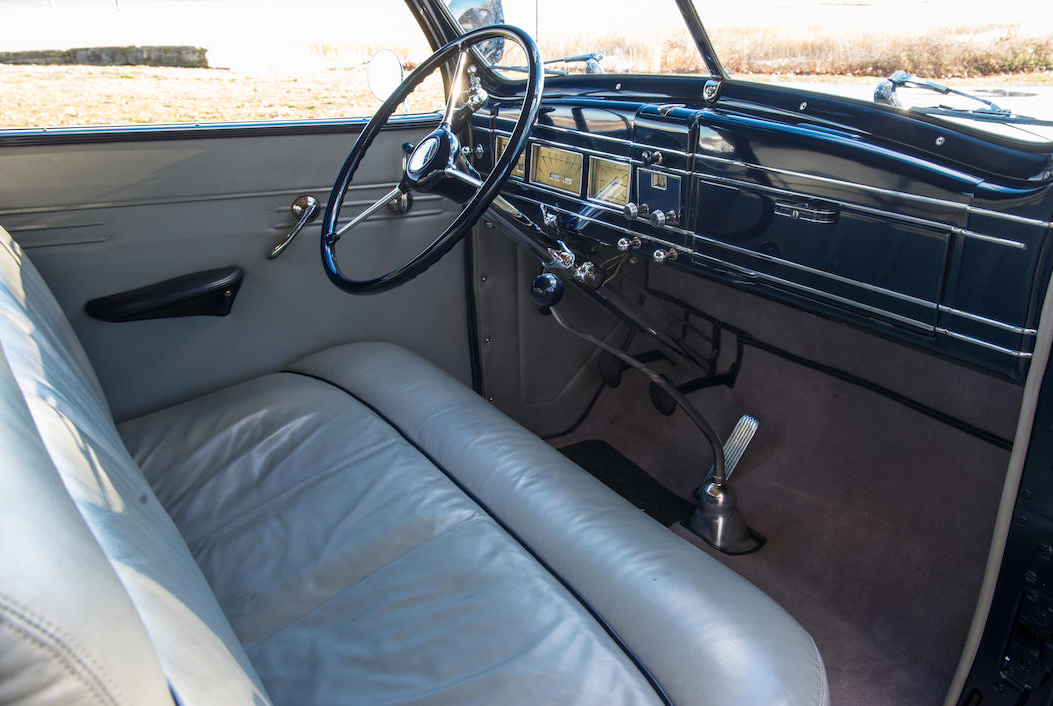
In 1938 Lincoln offered two different models with two different V12 engines. While the Zephyr used a 110 HP 267ci unit, the K used a 150 horse 414c–also an L-head design.

Edsel Ford had long since resolved the first Lincolns’ stodgy body designs by relying on Ford’s own designers and a loyal retinue of coachbuilders including Brunn, LeBaron, Willoughby and Judkins. The coachbuilders supplied both individual bodies and a steady stream of up-to-the-minute ideas, which could be incorporated in Lincoln’s own coachwork. 1938 brought important visual changes in Lincoln design, including a new grille, and revised hood side shutters and side trim, which eliminated the thermostatically controlled hood shutters.
